


































































































































































































































Modern automobiles are technological marvels. As advancements in automotive technology have made cars more reliable than ever, drivers may feel as though vehicle ownership also is more hands-off than ever before. Though it’s true built-in diagnostic technology is designed to alert drivers when issues arise, it can still benefit motorists to recognize when certain issues may arise.
Cars and the people who drive them are different, so mileage intervals are not always the best measuring stick for maintenance issues. However, the following rundown can serve as a guidebook for drivers who want to know what to expect at various mileage intervals.
• 30,000 miles: The experts


at Auto Trader note that disposable engine air filters usually last between 15,000 and 30,000 miles. If it’s been around 30,000 miles since the engine air filter has been replaced, now is a good time to replace this important part, which prevents components like dirt and debris from getting into the engine. This also might be a good time to replace the fuel filter, which prevents debris from clogging fuel injectors.
• 50,000 to 60,000 miles: It’s around this time that drivers may need to replace their vehicle batteries. Littleused vehicles may need a new battery much earlier, as lengthy periods of little or no use adversely affect the life expectancy of vehicle batteries. Brakes also may need to be replaced around this time, as the experts at
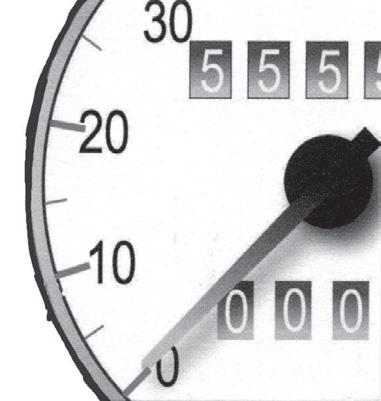

AutoZone® note that most drivers get between two and five years out of a set of brake pads. If that sounds like a significant disparity, it is, and that’s because driver behavior is a significant variable affecting the life of the pads. Drivers who brake hard will likely need to replace their brake pads with greater frequency than drivers who brake slowly.
• 50,000 to 90,000 miles:
As noted, there is no uniform guideline governing when vehicle components will need to be replaced. Hoses are a good example of that, as recommendations regarding when to replace hoses range from 50,000 to 90,000 miles. That’s a significant gap, but drivers can be on the safe side and start discussing the status of their hoses with
Most of us make a concerted effort to take care of our cars. We get the oil changed and have the tires rotated when we’re supposed to, and we have a mechanic take a look if it starts pinging or dinging. Most of us even make sure the car is clean, either running it through a car wash or scrubbing it ourselves. But beyond the standard washing, do we ever repair its finish or protect it? Do we wax it or polish it? Do we even know the difference between the two procedures? Waxing a car and polishing a car are two different processes that use two different substances and achieve two different outcomes.
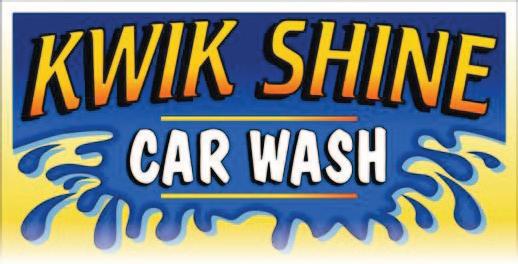
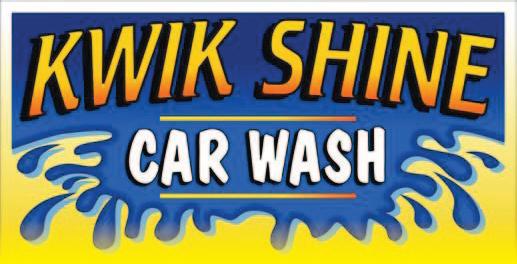
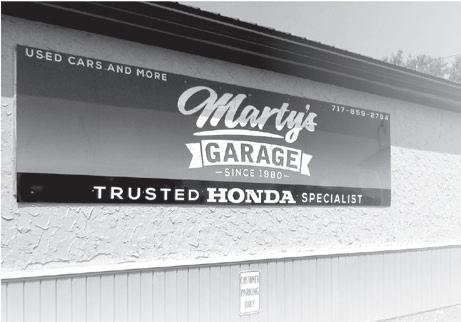






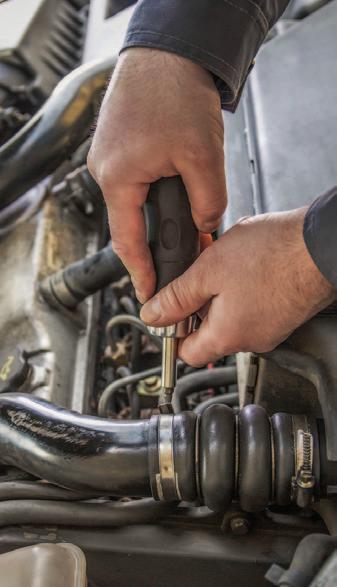
their mechanics around the 50,000 mile marker. It’s unlikely the hoses will make it all the way to 90,000 miles before they need to be replaced, but drivers can keep that mileage marker in mind and aim to replace the hoses before that point even if no issue has arisen. Timing belts also tend to fail between 80,000 and 100,000 miles, so this is another part to consider replacing as a vehicle reaches this point.
These mileage markers are not set in stone, and should only serve as a guideline for drivers who want to stay ahead of vehicle repairs. Drivers also are urged to discuss any additional changes that might be necessary with their mechanics during routine maintenance appointments.
Waxing a car is in essence adding a layer of protection. Waxing adds shine to a car and gives it that wet look, but it also protects the car from the elements and ultraviolet light. Waxing also protects the car’s color from fading and helps delay oxidation by forming a physical barrier against dirty, corrosive substances.
So, what does polishing accomplish? When you polish a car you clean it. Polishing eliminates scratches, rust, dirt and wax. Polishes contain abrasives that actually remove a thin layer of the car’s paint.
(Continued On Page 4)















Sport utility vehicles (SUVs) may never be as fuelefficient as more traditional cars, but one segment of the SUV market has made great strides in relation to fuel efficiency since the turn of the century. Data from the Environmental Protection Agency’s 2020 EPA Automotive Trends Report indicated the small SUV segment had the greatest improvement of fuel economy among all vehicle segments between 2000 and 2020. Average fuel economy among small SUVs increased by 65 percent during that period, which began with such vehicles getting 17.9 miles per gallon of gas and ended with them averaging 29.5 miles per gallon. The Chevrolet Equinox FWD, the Ford Edge FWD, the Hyundai Kona FWD, the Jeep Cherokee FWD, and the Mazda CX-30 2WD are among the vehicles that are categorized as small SUVs.
No
be traumatizing.
Knowing what to do in the immediate aftermath of an accident may make such instances less stressful.
Assess the situation
The insurance experts at GEICO® advise individuals involved in an accident to first determine if any of the involved parties suffered an injury. If you are injured, stay put. If not, check on the condition of the other driver. At this point do not admit any fault or reveal any policy limits.

Next, make a call to emergency services to request assistance from the police and an ambulance, if necessary.
Move your vehicle
If possible, pull the vehicle over to a safe, well-lit public location. This is especially important if you believe you were the victim of a staged accident, says the Insurance Information Institute. If the car will cause another road hazard, it is best to move it over to the side and use flashers to alert oncoming traffic. It is important that you don’t leave the scene, according to American Property Casualty Insurance Association.
Gather evidence
Have the police write up an accident report. You should take pictures of the damage to your vehicle, the other vehicle, if possible, and the scene of the accident, including any skid marks, debris and/or property damage. If there are any witnesses to the accident, get their names and contact information. You’ll need this
information when filing an insurance claim.
Exchange information
Collect the names, phone numbers, addresses and email addresses of other drivers and vehicle occupants and exchange insurance information with all drivers involved. That includes the insurance company name, policy number and the name of the insured.
Notify a friend or family member
Even if the accident is not serious, you may want to call a friend or family member to provide emotional support. If you’ve been injured, a friend or family member can meet you at the hospital and/ or arrange to have your vehicle towed or returned home while you get the care you need.
Automotive accidents can be nerve-wracking. Knowing the steps to take can alleviate some stress.













































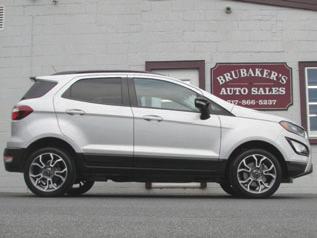












































(Continued From Page 2)
Polishing also brings out the color and adds shine.
As you might have already figured out, wax and polish are composed of different elements. Wax comes in two forms, paste and liquid. It can be natural or synthetic, with natural wax containing a large amount of carnauba wax, derived from the carnauba palm.
Polish usually comes in liquid form but can also be purchased in spray form. Polish can be chemical or abrasive, with abrasive being used more for small areas of rust or scratches.
Because polish has the ability to remove a layer of
paint, caution is recommended. Be sure to read the application instructions thoroughly or your car could end up with a bare metal finish.
So which comes first, waxing or polishing? Because polish can remove wax, obviously you would wax your car after polishing it. Remember, when you are waxing you are sealing. You’ve washed your car, you’ve polished it (removing rust, scratches and oxidation) and then you wax it to seal in all of your hard work.
Remember to read the instructions on any car care product you buy and be aware of what’s going to happen before you start. If you have questions or concerns, be sure to consult a professional.

123


Impaired driving and distracted driving get their share of attention, as both contribute to fatal yet often preventable accidents. However, another danger lurks when people get behind the wheel — particularly when they engage in drowsy driving.
The National Safety Council says drowsy driving accounts for roughly 100,000 crashes, 71,000 injuries and 1,550 fatalities in the United States each year. The Council equates the effects of driving while tired to driving with a bloodalcohol content of 0.08 percent. The majority of drowsy driving incidents happen between midnight and 6 a.m. or in the lateafternoon hours, indicates the National Highway Traffic Safety Administration. The Centers for Disease Control and Prevention reports that one in 25 drivers have admitted to falling asleep behind the wheel.
Remaining awake and alert behind the wheel may seem easy. But droopy eyelids and incessant yawns can catch any driver off guard. The following tips can help drivers remain more alert.
• Alcohol and certain

medications can exacerbate feelings of drowsiness, so neither should be ingested prior to driving. It is important to determine if fatigue arises after taking new medicines before getting behind the wheel.
• Try not to make long distance trips alone. A companion on the drive can share driving duty and provide conversation that helps drivers stay alert.
• Get adequate sleep at night. It is more likely that
you may fall asleep behind the wheel if you are sleep deprived.
• Recognize gas station snacks will not be the fix. According to Nancy Foldvary-Shaefer, DO, MS, a sleep medicine specialist, once the body metabolizes these snacks, which tend to be carbohydrate-heavy, drowsiness can increase as the sugar spike in the bloodstream wears off.
advises the Cleveland Clinic.
• Exercise increases blood flow to the brain and reduces stress hormones. Doing a small workout before getting on the road, or during pitstops, can help drivers stay alert.
• Don’t begin a trip during a time when you would normally be sleeping. Stop and start while you are alert. Build rest into your budget and stop at a roadside motel.



• Sip coffee or a caffeinated (unsweetened) beverage. The caffeine is a central nervous stimulant. Avoiding sugar will mean you won’t crash once it wears off.
• Pull over and take a rest or a brief, 20-minute nap,
• Blasting music may not be a fix, and actually could be an extra distraction, causing you to miss the sounds of horns or sirens.
Staying alert in the car involves some strategies that any driver can employ.

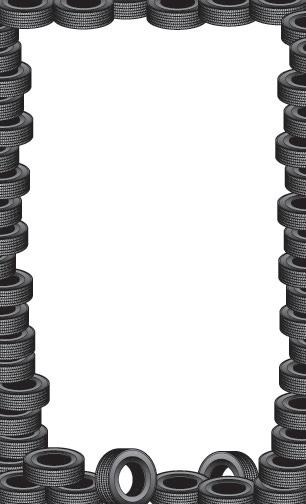














The last few years have not proven the most advantageous times for new car buyers. According to the Consumer Price Index Summary from the United States Bureau of Labor Statistics, buyers paid 12.2 percent more for new vehicles in January 2022 than they had in January 2021. Faced with such a significant increase in price, many drivers understandably want to keep their current cars longer than they might have initially planned.
Data released by S&P Global Mobility in early 2022 indicated that the average vehicle on the road is 12 years and two months old, which marked the highest number in the 20plus years such information was tracked. A host of variables affect how long drivers keep their cars, but the rising cost of new vehicles has undoubtedly compelled many drivers to aspire to keep their cars for longer periods of time.
Aging cars may require a little more TLC than vehicles that are right off the dealership lot. But the following are three simple tips that can help drivers keep their cars running longer.
1. Become a more careful driver. A careful approach when behind the wheel is

safer than aggressive driving and beneficial for your vehicle. When starting, avoid revving the engine, which needlessly wears it down. When out on the road, avoid rapid accelerations, which also contributes to needless wear and tear. Even excessive idling can adversely affect the engine, so keep winter warm-ups to around 30 seconds to prevent damage to engine components.
2. Know when and how to fill up. Every driver has likely visited a filling station


when an oil tanker is busily filling the tanks. That’s traditionally been considered a less than ideal time to fill up, as the theory is that filling the tanks stirs up sediment that could then find its way into consumers’ gas tanks, adversely affecting their vehicles. However, that’s often dependent on the

station itself and how much its owners prioritize maintenance of the tank and filtration systems. Drivers who trust their local station owners can likely fill up when the tankers are present without worry. In addition, avoid topping off once the nozzle clicks when filling up. The U.S. Environmental
Protection Agency notes that topping off is harmful to the planet and the vehicle, as gasoline needs room to expand. When you top off, the extra gas may damage the vapor collection system and cause the vehicle to run less efficiently.
3. Change oil more frequently as the vehicle ages. It’s true that modern vehicles no longer require oil changes for every 3,000 miles driven. However, as vehicles age, drivers and their vehicles’ engines may benefit from more frequent oil changes than the owner’s manual necessarily recommends. Oil changes remove dirt and metal particles from the engine, potentially contributing to a longer life expectancy. More frequent changes can be especially beneficial for vehicles that are routinely driven in stopand-go traffic.
Rising vehicle costs have compelled many drivers to keep their cars longer than they initially planned. Some simple strategies can help drivers achieve that goal.
Shoppers in the market for new vehicles may experience some sticker shock when heading to a nearby dealership to price out the inventory. According to findings from Kelley Blue Book released in September 2023, the average cost of a new car was well over $48,000, which is up almost $6,000 from two years ago. Various factors have driven this increase. In addition to inflation, continued disruptions to buying habits, manufacturing processes and personal finances related to the global pandemic have taken their toll. In addition, many automakers have reduced or discontinued production on lower-priced sedans and compact cars as many consumers increasingly gravitate toward more costly SUVs. Increased interest in electric vehicles also comes at a high price.
Kelley Blue Book says the average new EV sold for $53,376 in August 2023. Though that reflects a price reduction from the year prior, when the average cost was around $65,000, such cars remain big-ticket items.














































savvy options. However, preowned vehicles come with their own risks, such as the potential for hidden problems. A vehicle history report is something every prospective preowned vehicle buyer should ask to see before buying a car or truck. Sometimes these reports are a free service offered by a seller, particularly an established dealership. But buyers may have to pay to get a vehicle history report, which typically cost between $25 and $40.

Kelley Blue Book says a vehicle history report is a collection of records that provide information on a used vehicle that are pulled from thousands of sources. A report may be referred to as a “Carfax®,” which is the name of a firm that offers these types of reports. However, Car & Driver indicates that Carfax®
only provides information that was reported, so their reports may not paint the full picture. A typical vehicle history report will indicate, among other things, how many people owned the car; whether or not the vehicle has been in a collision; the mileage on the vehicle; if the car is current on inspections; and if the vehicle is branded a lemon.
Consumers should know what to look for when reading a report. While some of the data will be obvious,
there are some less apparent points to consider as well.
• Title: Make sure the vehicle never had a salvage title or other title problems. A salvage title, for example, is a vehicle that has been declared a total loss from collision, flood, theft, fire, or vandalism. Additional issues may arise when the seller’s name is not on the title. A rebuilt title means the vehicle was once salvaged but then refurbished.
• Ownership: The vehicle history report will indicate how many owners have had the vehicle. A car that has changed hands many
times may not be the best investment.
• VIN: It’s important to make sure the vehicle identification number (VIN) for the vehicle matches what is on the vehicle history report.
• Location of sales: The locations where the vehicle was used and stored also is important. For example, some may be hesitant if a vehicle was kept by the coast due to moisture and salty conditions that could cause premature wear and tear on components.
• Fleet vehicle: Carfax says that the history report will indicate if the vehicle spent time in a fleet. This includes rental vehicles, government vehicles, company vehicles, and dealer vehicles. A fleet vehicle may have had many different drivers over a short period of time.
Auto City suggests paying close attention to the most recent parts of a vehicle’s history. If there have been multiple changes in ownership or increased service records for certain parts, that may indicate there is something seriously wrong with the car.
Vehicle history reports are another tool buyers can use when vetting preowned cars or trucks.








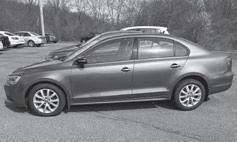







Most of us know that regular maintenance is key to a well-running vehicle. That’s why we get our oil changed, have our tires rotated and so forth. Another important part of the regular maintenance schedule is the tune-up. Because the internal workings of vehicles have changed so much over the years, the definition of a tune-up may vary from the simple replacement of spark plugs to the complete overhaul of several areas within the vehicle.
Most experts agree that the best tune-ups involve an inspection of several areas, including the battery, engine mechanical, powertrain control, fuel, ignition and emissions. Not every shop defines a tune-up in this way, however. Generally, the more involved the tuneup, the more it costs.
When scheduling a tuneup, it is important that you find out what it will entail and how much it will cost. Be wary of really low estimates; chances are the shop is pushing for your business and the final bill for the tune-up will be much higher.
The best shops understand that not all drivers know what a tune-up is and request one on the assumption that it will fix whatever is wrong with their vehicle. They will ask why you think your vehicle needs a tune-up and go from there. You may discover that what you really need are new battery cables rather than new spark plugs.
Once you have several estimates, sit down and compare them. Select the shop whose estimate includes a fairly thorough inspection at a fair price. You want to make sure that when you drive away from the shop your vehicle is running smoothly and efficiently.
The term “tune-up” means different things to different people. Keep that in mind as you shop around for estimates.
Drivers go to great lengths to ensure what’s under the hood of their vehicles is well taken care of. But it’s equally beneficial to tend to the exterior of a vehicle, including its paint job.
According to Popular Mechanics, oxidation can adversely affect iron-based metals. That can put vehicles in jeopardy and take significant time off their life expectancy. The good news is that rust and other issues that can affect a vehicle’s paint job and appearance are typically avoidable. That should be music to the ears of new vehicle owners, who likely need no reminder of the sizable financial investment required to drive off the lot with a fresh set of wheels. Drivers who want their cars and trucks to maintain their looks over the long haul can consider these simple strategies to protect their paint jobs.
• Make car washes part of your vehicle maintenance routine. Seasoned drivers are undoubtedly familiar with the conventional wisdom surrounding oil change intervals, but those same motorists may not recognize

the importance of routine car washes. Over time, contaminants such as pollen, dust and pollution can settle on a vehicle’s exterior, potentially jeopardizing the paint job. Routine car washes can prevent such damage and help a car look like it was just driven off the lot.
• Wax the exterior of the vehicle. The automotive experts at Carfax® report that waxing is a significant and simple way to protect

vehicle paint. Carfax® notes that certain paste waxes contain mild abrasives that help remove fine scratches from painted surfaces. Wax also can protect paint jobs from fading related to exposure to ultraviolet rays. That’s especially noteworthy for drivers who do not routinely park their cars in a garage.
• Use a car cover. Car covers may or may not be practical for cars drivers use every day, but they are an effective way to protect a paint job from the elements. Drivers who have a spare car they rarely drive or even those who do not drive their primary vehicle a lot each day can purchase a universalfit car cover or a premium
cover designed specifically for their vehicles. Car covers protect paint jobs from ultraviolet rays and the elements and may reduce the need for more frequent trips to the car wash.
• Park in the shade, but choose spots wisely. Parking in the shade may protect vehicles from the ultraviolet rays of the sun, but it’s important that drivers pick the right shady spot to park their cars and trucks. A shade tree might seem like a great ally to vehicle owners, but if birds nest or rest in the tree, drivers could be exposing their cars to bird droppings. That’s no small threat, as bird droppings are high in uric acid, which quickly damage a vehicle’s exterior. Parking directly beneath a tree also might expose the paint job to sap or fallen leaves or berries, each of which can adversely vehicle exteriors. If you plan to park in the shade to protect the paint job, ideally choose a spot that is not directly beneath the tree.
































